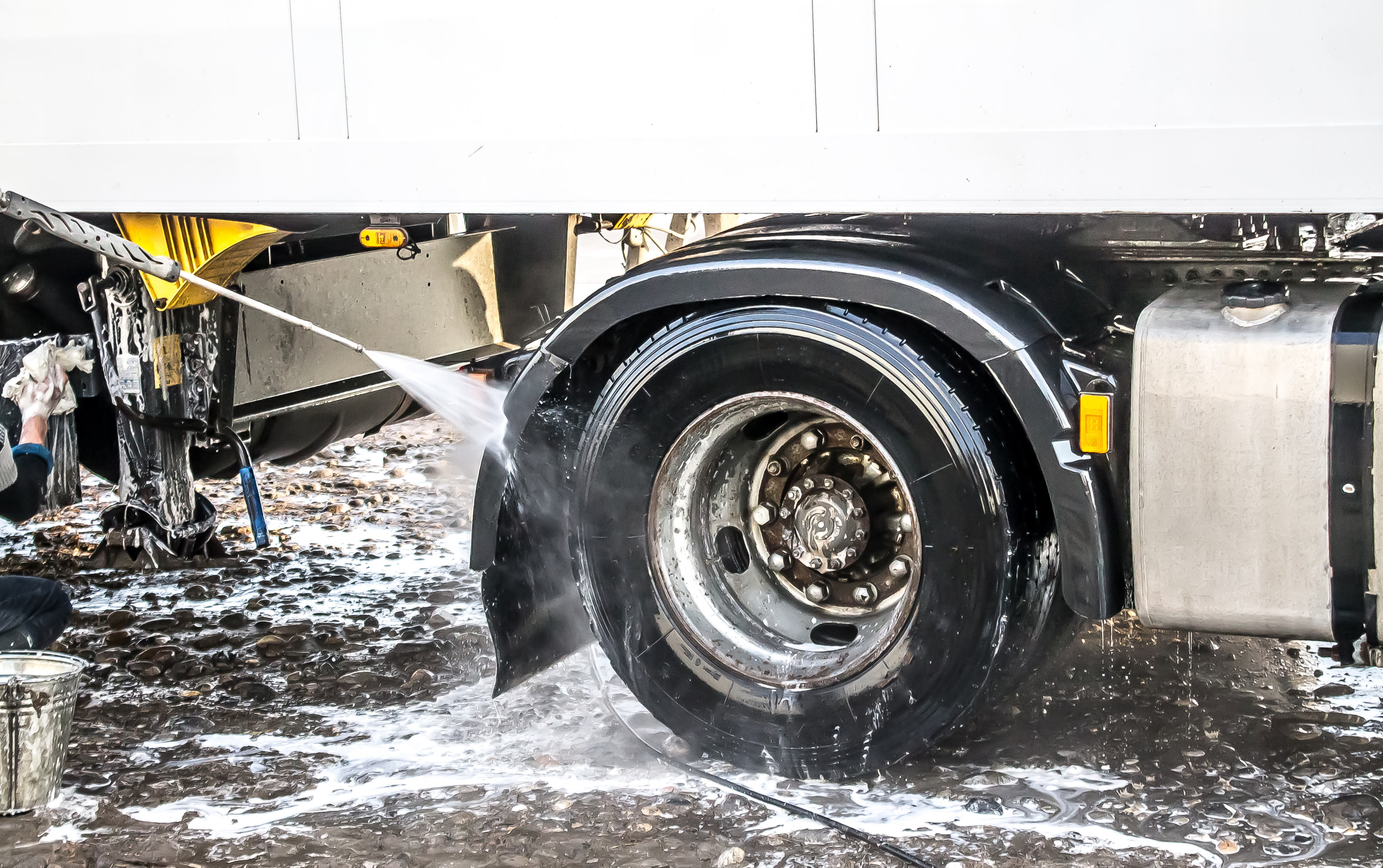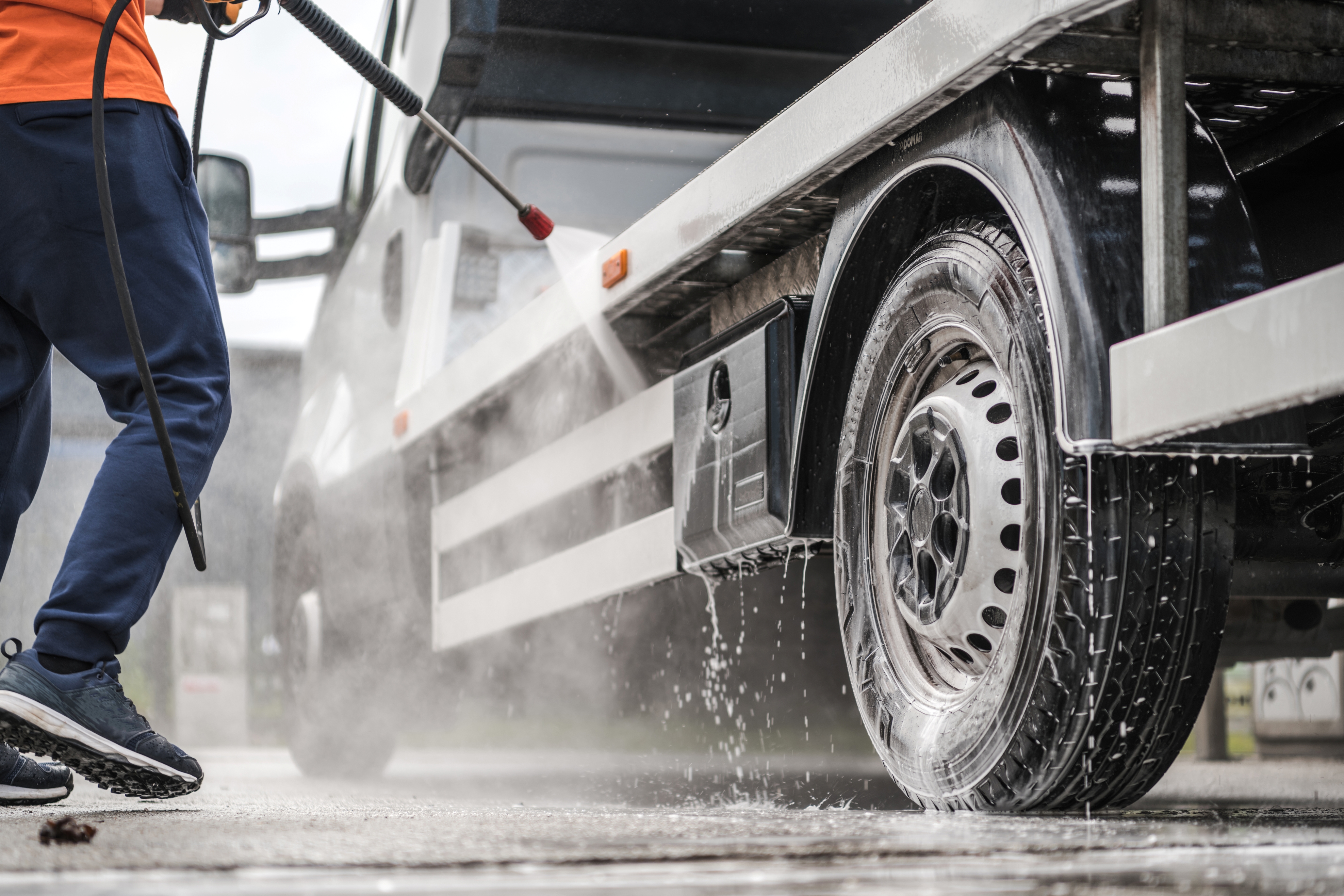
Miranda Blake
Kaip rasti šalia esančią sunkvežimių plovyklą
Sukurta: 23-10-2024
•
Atnaujinta: 01-11-2024
Nesvarbu, ar gabenate krovinius per tarptautines sienas, ar valdote sunkiasvorių sunkvežimių parką, kruopštus transporto priemonių valymas ir priežiūra gali turėti didelės įtakos jų našumui, ilgaamžiškumui ir bendram veiklos efektyvumui. Laimei, patikimą ir patogią sunkvežimių plovyklą netoli jūsų gyvenamosios vietos rasti nesunku - skaitykite toliau ir sužinokite, kaip tai padaryti.
Ką apima sunkvežimių plovimas?
Kai kalbama apie transporto priemonių valymą, sunkvežimiams reikia specialių patalpų ir įrangos, kad būtų patenkinti jų unikalūs reikalavimai.
Vieta ir prieinamumas
Sunkvežimių plovyklos strategiškai išdėstytos prie pagrindinių greitkelių ir tarpvalstybinių išvažiavimų, kad būtų lengva pasiekti plovyklą ir kuo mažiau trikdomas sunkiasvorių transporto priemonių srautas. Toks išdėstymas leidžia tolimųjų reisų vairuotojams greitai ir patogiai nuvykti į reikiamas plovimo paslaugas, nesudarant sunkumų judėti perpildytomis miestų gatvėmis.
Reikalavimai įrangai ir patalpoms
Kadangi sunkvežimiams reikia tvirtesnės ir galingesnės technikos, kad jie galėtų susidoroti su purvu, purvu ir kelio šiukšlėmis, kurios kaupiasi ant jų plataus paviršiaus, plovimo paslaugoms paprastai reikia didesnių aikštelių, didesnių atstumų ir specialios įrangos, įskaitant aukšto slėgio plovimo įrenginius ir ilgo nuotolio šepečius.
Išteklių suvartojimas ir sąnaudos
Sunkvežimiams plauti paprastai reikia daugiau vandens ir elektros energijos dėl transporto priemonių dydžio ir tūrio, taip pat dėl poreikio atlikti intensyvesnes valymo procedūras. Toks didesnis išteklių naudojimas lemia didesnes veiklos sąnaudas, kurios vėliau atsispindi kainoje.
Paslaugų pasiūla ir specializacija
Sunkvežimių plovykloje daugiausia dėmesio skiriama visapusiškam išorės valymui, įskaitant specializuotas paslaugas, pavyzdžiui, variklio nuriebalinimą ir purvasaugių plovimą, kad būtų patenkinti unikalūs sunkiasvorių komercinių transporto priemonių švaros palaikymo poreikiai ir iššūkiai.

Sunkvežimių plovyklų kraštovaizdžio navigacija su SNAP
Rasti jūsų poreikius atitinkančią įstaigą gali būti nelengva užduotis. Čia į pagalbą ateina SNAP, integruotų paslaugų kelių transporto pramonei teikėjas, kuris palengvina jūsų kelionę.
Platus sunkvežimių plovyklų tinklas
Mūsų tinklas išsidėstęs visoje Europoje ir turi daugiau kaip 230 vietų, kuriose specialiai tenkinami komercinių transporto priemonių operatorių poreikiai. Jos strategiškai išdėstytos prie pagrindinių greitkelių ir transporto mazgų, kad vairuotojai galėtų lengvai gauti reikiamas valymo paslaugas, netrikdydami savo tvarkaraščių ar maršrutų.
Pažvelkite į mūsų SNAP žemėlapį ir sužinokite, kaip rasti netoli jūsų esančias įstaigas.
Sklandi integracija
"SNAP Account" integruota su sunkvežimių plovyklų tinklu, todėl vairuotojai ir automobilių parkų operatoriai gali patogiai mokėti už paslaugas naudodamiesi viena saugia sąskaita. Taip nebereikia mokėti grynaisiais pinigais ar keliais mokėjimo būdais, supaprastinama plovimo patirtis ir pateikiamas išsamus automobilių parko išlaidų valdymo sprendimas.
Individualūs sunkvežimių plovimo sprendimai
SNAP sunkvežimių plovyklose yra visa reikiama įranga ir kompetencija - nuo išorinio valymo aukštu slėgiu iki specializuoto važiuoklės plovimo ir variklio nuriebalinimo, kad būtų užtikrintas kruopštus ir efektyvus plovimas.
Saugi ir prieinama automobilių stovėjimo aikštelė
Be sunkvežimių plovimo paslaugų, taip pat teikiame saugių ir prieinamų depo stovėjimo aikštelių tinklą visoje Europoje. Šiose specialiose stovėjimo aikštelėse, skirtose tik SNAP paskyros turėtojams, siūlomos patobulintos saugumo priemonės ir galimybė patogiai iš anksto rezervuoti stovėjimo vietas naudojantis mūsų mobiliąja programėle intruck. Taip vairuotojai gali būti ramūs, kad jų transporto priemonės yra saugios ir pasiekiamos.
Optimizuotas automobilių parko valdymas su SNAP
Integruodami visą mūsų paslaugų rinkinį, transporto priemonių parko operatoriai gali supaprastinti savo veiklą ir pasiekti didesnį efektyvumą. Nuo sklandaus sunkvežimių plovimo ir saugios automobilių stovėjimo aikštelės iki degalų valdymo ir mokėjimų Dartfordo perėjoje - mūsų sprendimai leidžia transporto parkų valdytojams sutelkti dėmesį į pagrindinius verslo tikslus ir maksimaliai išnaudoti technologijų galimybes procesams optimizuoti.
Padidinkite savo automobilių parko našumą naudodami SNAP
Komercinių transporto priemonių švaros ir geros būklės palaikymas yra labai svarbus aspektas užtikrinant veiklos tobulumą. Naudodamiesi plačiu SNAP specializuotų įrenginių tinklu, galite padidinti savo transporto priemonių parko našumą ir ilgaamžiškumą, kartu supaprastindami bendrą transporto operacijų valdymą.
Mūsų integruotos paslaugos - tai visapusiškas sprendimas, atitinkantis unikalius komercinių transporto priemonių pramonės poreikius. Mes suteikiame galimybę susitelkti į tai, kas svarbiausia, - saugiai ir efektyviai pristatyti krovinius, sumažinant rūpesčius ir maksimaliai padidinant verslo pelningumą.
Taigi, kai važiuosite pirmyn, leiskite SNAP būti patikimu partneriu išsaugant nepriekaištingą jūsų transporto priemonių būklę. [Užsiregistruokite nemokamai šiandien!] (https://snapacc.com/sign-up/)



